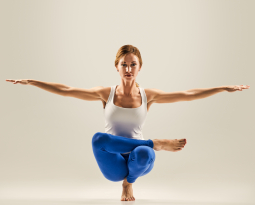
3 Easy-to-Implement Vestibular Exercises
Postural Balance
Postural balance is the ability to maintain the body in an upright position against gravity, dictated primarily by the vestibular system for balance. Postural fitness is the ability to maintain resilient static and dynamic postures during your activities of daily living. This aspect of posture is controlled by your motor cortex to initiate movement, and your vestibular system to keep you balanced while performing dynamic movements.
An aligned body is a balanced body. Balanced bodies are in homeostasis within their environments. Homeostasis is orderliness among bodily systems to promote better health and function.
Your Brain Craves Complexity
Repetitive, boring uniplanar movements are out, and Brain Based Posture Rehabilitation strategies are in. To create neuroplastic changes of the posture system, it requires dynamic movements and novel sensory stimuli. Our bodies are designed to move with upright, extended posture, or anti-gravity posture.
And yet, the majority of people are completely flexor dominant. We are not designed to do repetitive, uniplanar movements or to be sedentary. And yet, the majority of modern day occupations promote these poor postural habits.
The Vestibular System
The vestibular system, which consists of organs located in the inner ear, contributes to postural control by interpreting changes in movement, direction, and velocity. The vestibular system is of utmost importance because it activates your extensor response.
Flexor dominant posture is a weak, sick postural design. When the vestibular system is compromised, you will see anterior flexion of the shoulders and trunk and forward head posture. Plus, the patient will have poor balance control and may suffer from dizziness.
When the vestibular system is firing properly, the extensor musculature is dominant and the patient presents with better postural stability. They are moor coordinated and can maintain aligned balance during dynamic movements.
Easy to Implement Vestibular Exercises
To help your patients have better balance and better posture, you can integrate vestibular exercises into their posture rehabilitation program. Doing these three exercises will help create neuroplastic changes of the Posture System.
1) One Leg Balance
The first exercise is to have the patient balance on one leg with proper posture for 30 seconds. Be sure to check your posture while performing this exercise, if they are not accurately engaging the muscles of the posture system they will not achieve the desired results.
When they can perform One Leg Balance with proper posture for 30 seconds have them advance to the next progression by closing their eyes, By eliminating the visual field during the exercise it challenges the vestibular system even more for more advanced balance training breakthroughs.
2) Gaze Fixation with Head Movements
Fibers from the vestibular system and the visual system descend to the cervical spine, contributing to head position and cervical spinal posture. When the vestibular and visual systems are compromised, the patient presents with postural distortion patterns.
Another powerful exercise to stimulate the vestibular system is gaze fixation with head movements. Meaning that eyes stay focused midline on a fixated target and the head moves back and forth at a quick pace.
Have the patient fixate their gaze centrally on their finger (or you can place a sticker as a target on the wall) and move the head back and forth. This is called a No-No exercise because they are moving their head back and forth in the horizontal plane as if nodding their head no.
Have the patient perform this 5 times in each direction.
3) Rolls and Spins
Rolling and spinning are complex movements that the brain craves. If the patient has vestibular weakness on the right side (you can determine this by evaluating which side they lean to on One-Leg Balance), then have the patient spin or do rolls to the right.
They can spin in their office chair, or they can stand and spin. For rolls, you can have the patients on a mat, or for more advanced training they can perform flips on a trampoline.
Have the patient perform 5 rolls and spins to the side of weakness. Once they can perform this consider having them jump on a trampoline while spinning or doing flips. The patient may have a trampoline at home, or can go to a trampoline center if appropriate for their postural rehabilitation program.

















